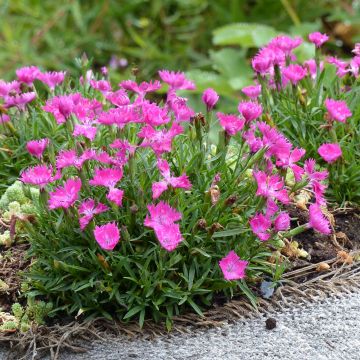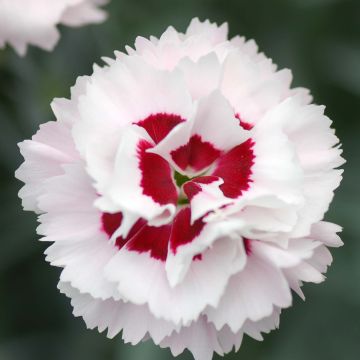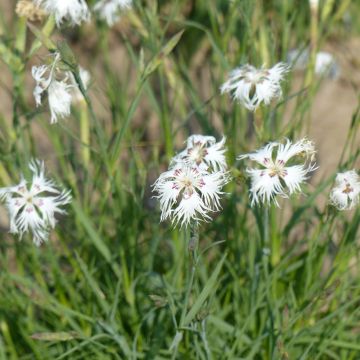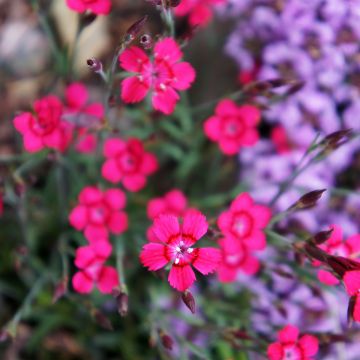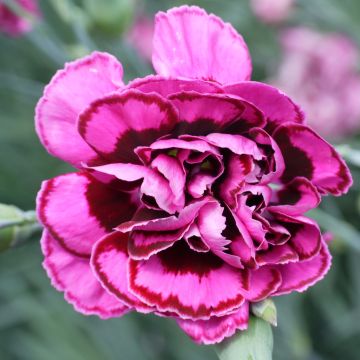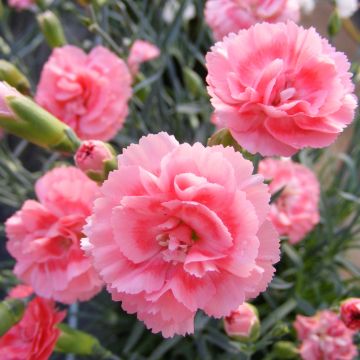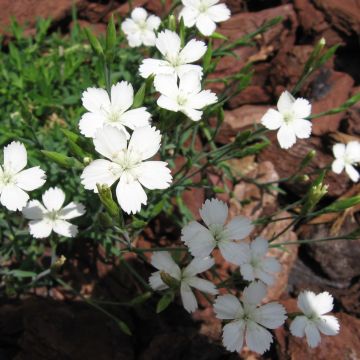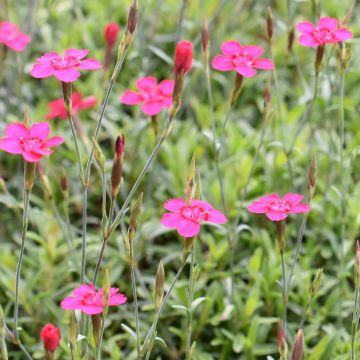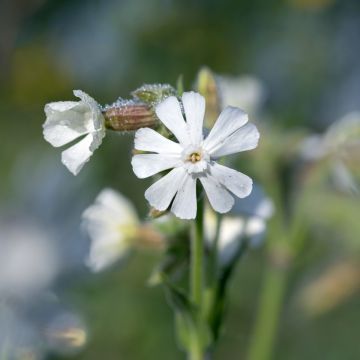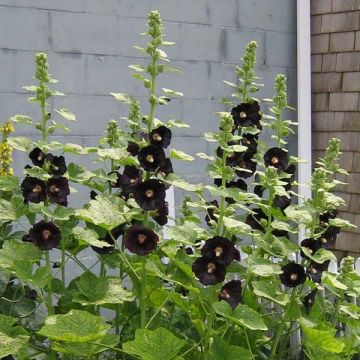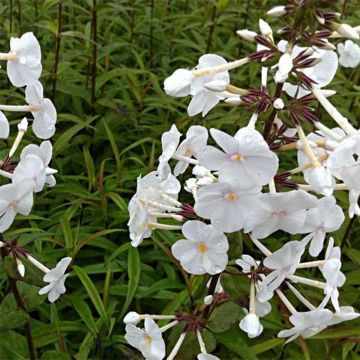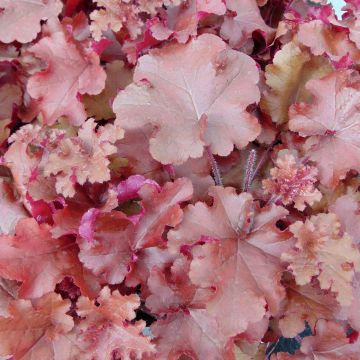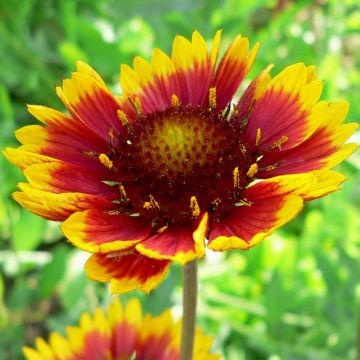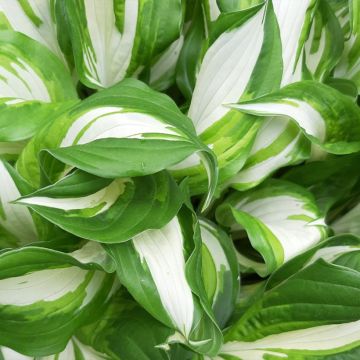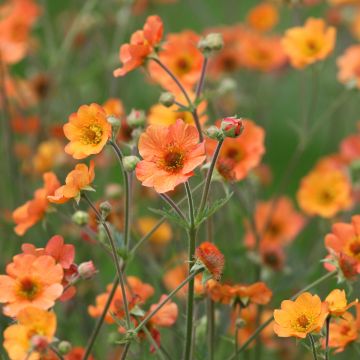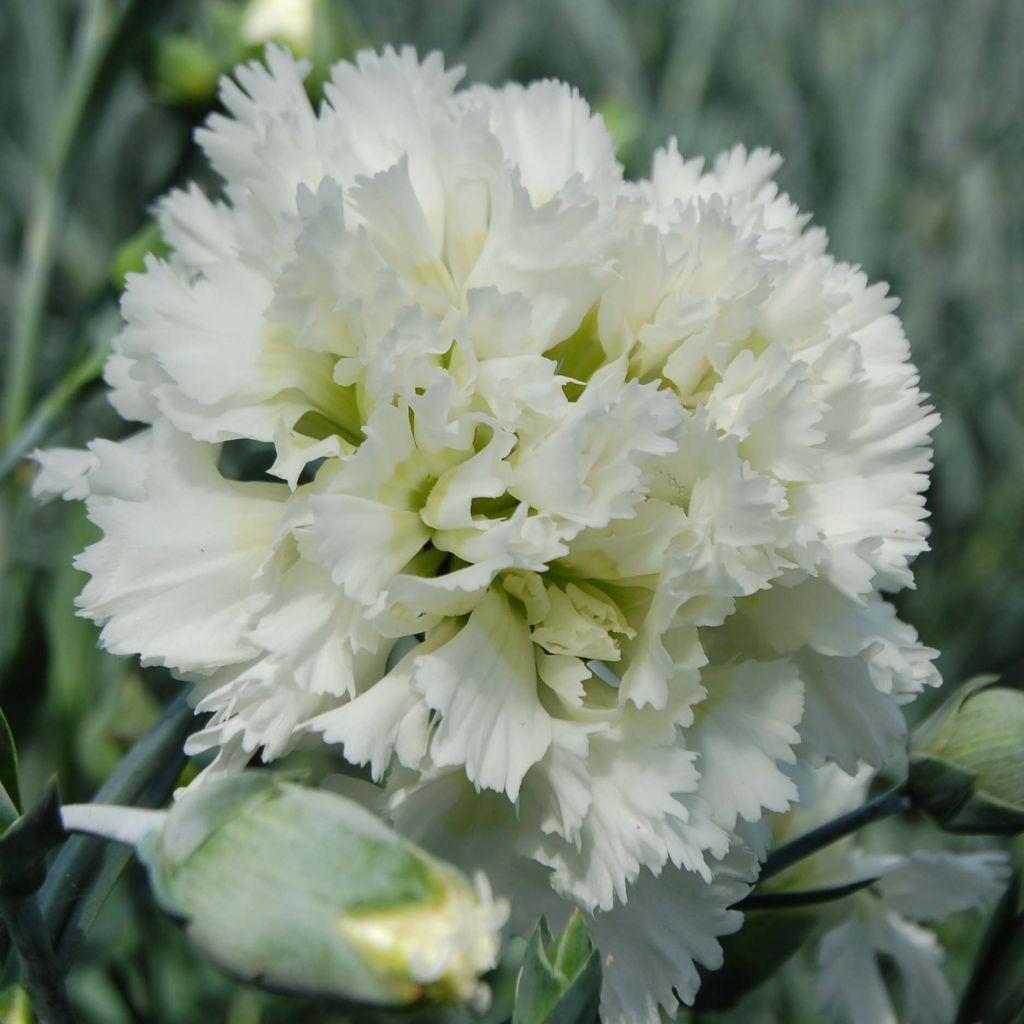

Dianthus plumarius Mrs Sinkins
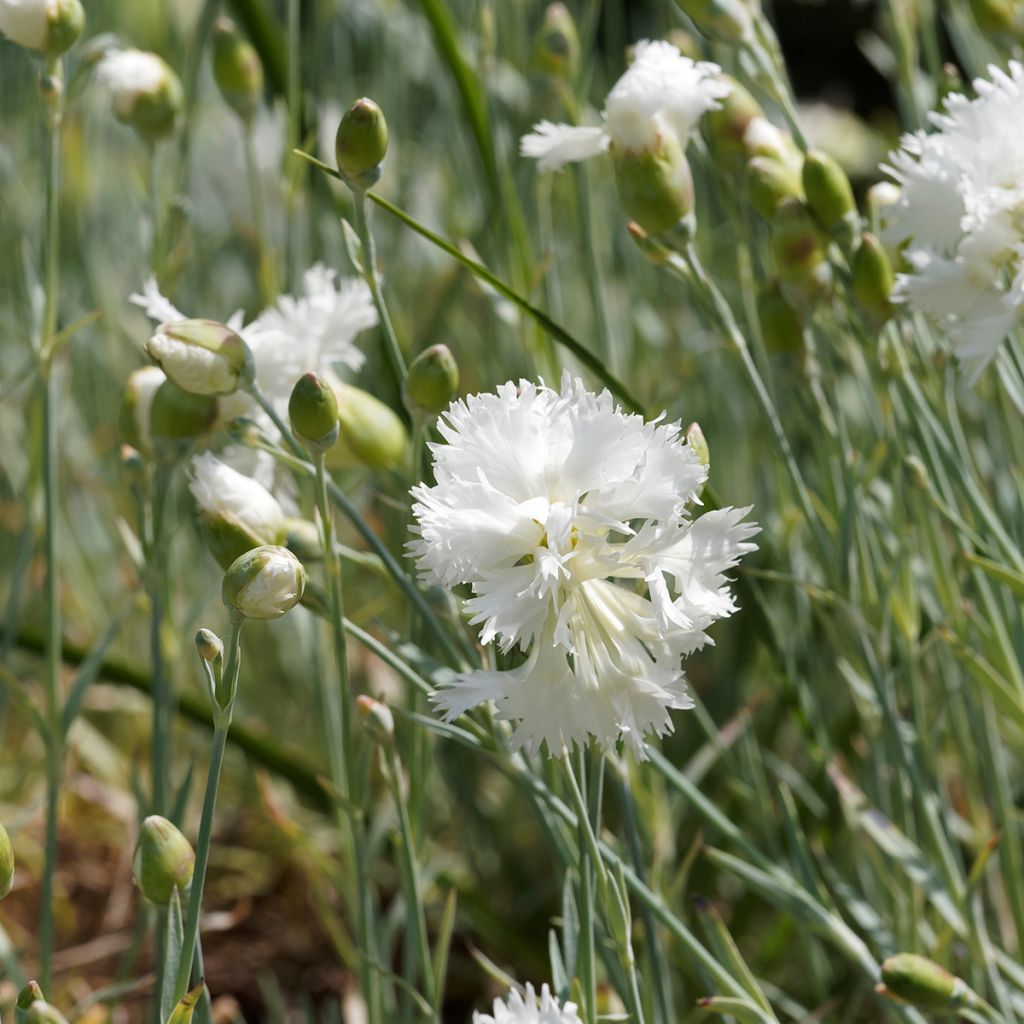

Dianthus plumarius Mrs Sinkins
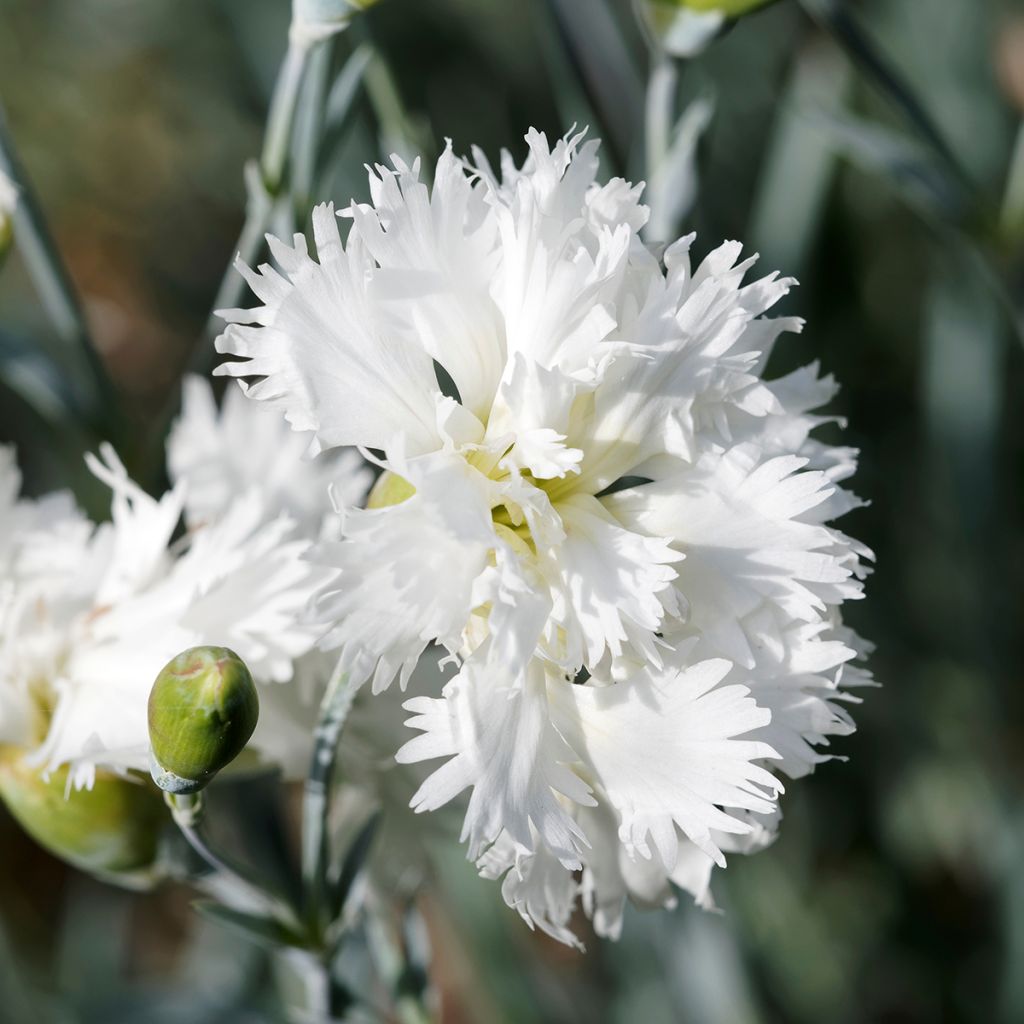

Dianthus plumarius Mrs Sinkins
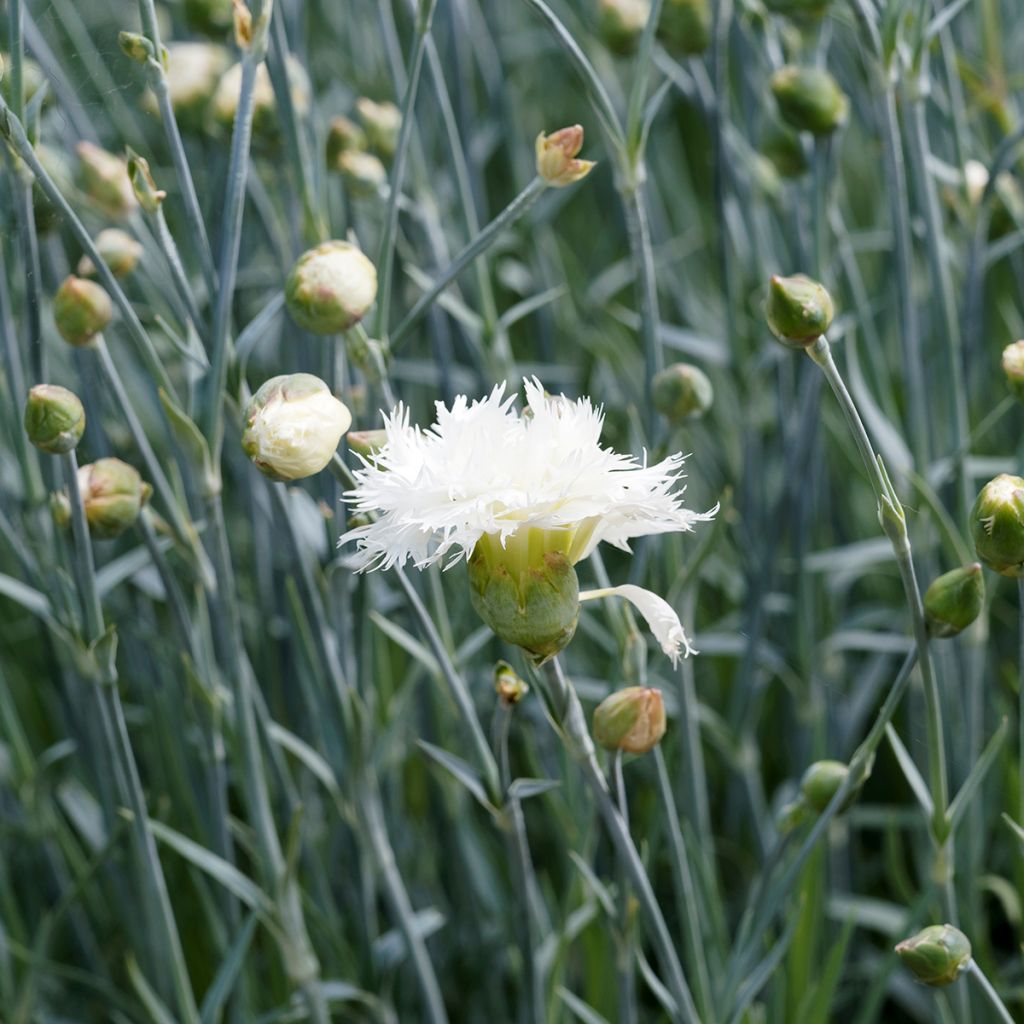

Dianthus plumarius Mrs Sinkins
Dianthus plumarius Mrs Sinkins
Dianthus x plumarius Mrs Sinkins
Garden Pink, Cottage Pink, Grass Pink, Carnation
Hello, By chance this year, I ended up choosing two white-flowered pinks, including the old Mrs. Sinkins. Please forgive me, it's not meant to disrespect her, but her creator hasn't had a toothache for a long time. When spring arrived, this pink flowered little - it's settling in - but has knitted a beautiful clump nearly 30 cm in diameter. The fragrance is as delightful as that of the ancient variety "Her Majesty" which comes in pale pink and white. These are the pinks of our grandmothers and sometimes even of their grandmothers. Pinks are less cultivated than in the past, yet they are unfailing, especially the dainty ones, and especially the old ones, even the white ones - and I'm not particularly fond of them. The great Colette detested white flowers and even more so white gardens because they reminded her of "a young girl's funeral". I agree with her when there's only white. But a bit of white, when it smells so good and looks so pretty, I say yes.
Philippe 87, 27/08/2024
This item cannot be shipped to the selected country
Delivery charge from €5.90
More information
Schedule delivery date,
and select date in basket
This plant carries a 12 months recovery warranty
More information
We guarantee the quality of our plants for a full growing cycle, and will replace at our expense any plant that fails to recover under normal climatic and planting conditions.
From €5.90 for pickup delivery and €6.90 for home delivery
Express home delivery from €8.90.

Does this plant fit my garden?
Set up your Plantfit profile →
Description
Dianthus 'Mrs Sinkins' is one of the most popular carnations among gardeners. This very old variety produces a profusion of white double flowers in late spring, which are distinguished by their feathery appearance. Their fragrance is so strong that a simple bouquet can perfume an entire room. It can easily be propagated by cuttings, meaning you can quickly create beautiful borders at a lower cost. It is a problem-free perennial. Perfect in well-drained soil in the sun. It is fantastic in borders, rockeries, or even in pots.
'Mrs Sinkins' belongs to the Caryophyllaceae family. It is an English cultivar dating back to 1868, resulting from cross-breeding between Dianthus plumarius, D. caryophyllus, and D. gratianopolitanus among others. Its growth rate is quite fast. Its adult size will not exceed 35cm (14in) in height with a spread of 40cm (16in) or more. This carnation forms a dense tuft, from which a profusion of 4 to 5cm (2in) wide double flowers with intensely and finely fringed petals emerge in May-June, carried at the end of well-budded stems. Its linear, glabrous, pruinose-looking, pointed, evergreen, and leathery leaves are a superb grey-blue colour throughout the year.
'Mrs Sinkins' is an elegant and prolific variety. It is ideal in borders, embankments, and dry rockeries. It brings undeniable charm to a garden design dominated by stone. This plant looks lovely above and between the stones of a wall or pavement, in a trough, or in a container. In borders, it can, for example, accompany muscari, small lavenders, catmints, or other flowering cushions such as helianthemums, silenes, Phlox subulata, and Erigeron karvinskianus. To evoke gardens of the past, one can plant a small border of these charming carnations at the foot of peony clumps and old roses. They adapt very well to cultivation in pots, in light soil.
Report an error about the product description
Dianthus plumarius Mrs Sinkins in pictures
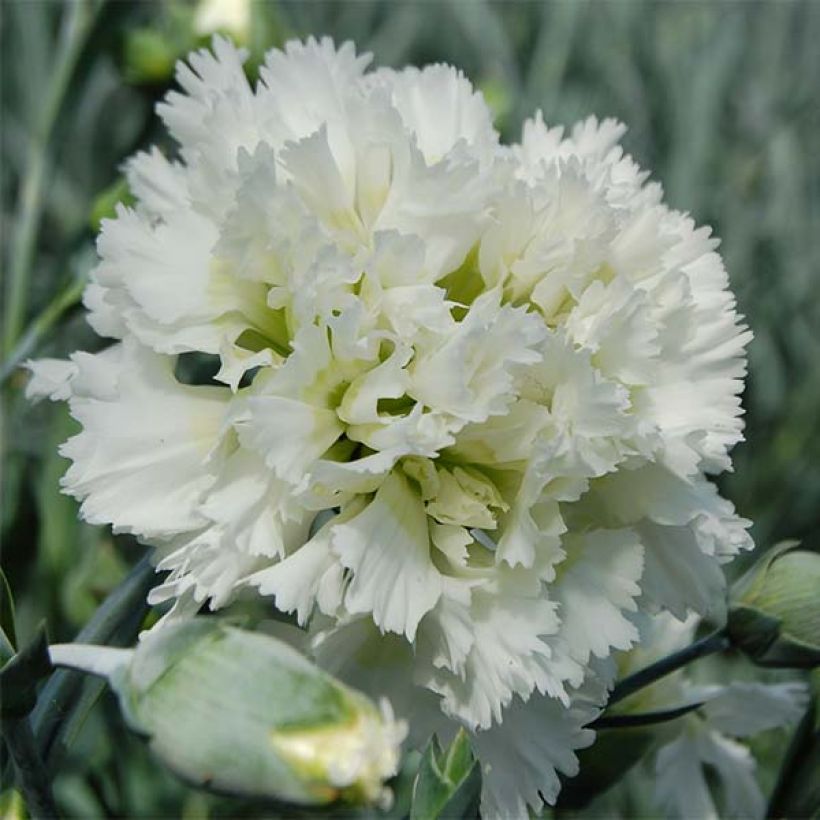

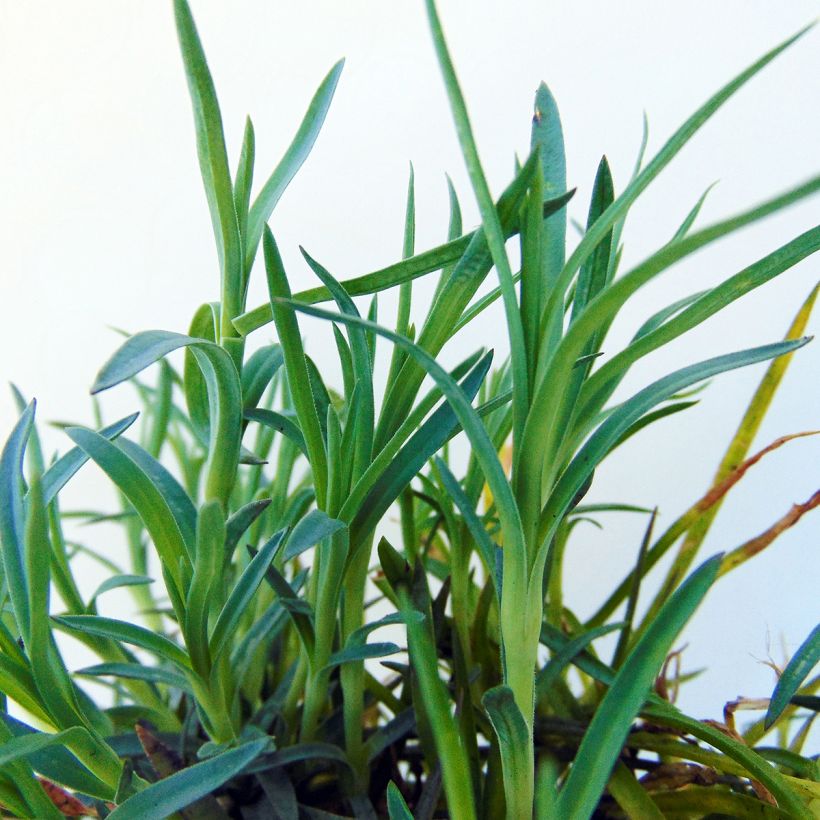

Flowering
Foliage
Plant habit
Botanical data
Dianthus
x plumarius
Mrs Sinkins
Caryophyllaceae
Garden Pink, Cottage Pink, Grass Pink, Carnation
Cultivar or hybrid
Other Dianthus - Pinks
Planting and care
Plant Dianthus 'Mrs Sinkins' in ordinary, permeable and humus-bearing, gravelly, rather chalky, dry to moist, and especially well-drained soil. Gravel-rich soil yields good results. In the ground, this plant is quite hardy, withstanding temperatures down to -15°C (5°F). It prefers a very sunny exposure. Lightly trim the clump after summer flowering to encourage a second bloom in September. In rich soil, trim part of the foliage with shears after flowering to maintain a dense habit. Apply a balanced fertiliser to poor soil in March. Divide the clumps every 3 years to rejuvenate those with bare bases. Propagate through layering or by taking cuttings.
Planting period
Intended location
Care
-
, onOrder confirmed
Reply from on Promesse de fleurs
Summer flowering perennials
Haven't found what you were looking for?
Hardiness is the lowest winter temperature a plant can endure without suffering serious damage or even dying. However, hardiness is affected by location (a sheltered area, such as a patio), protection (winter cover) and soil type (hardiness is improved by well-drained soil).

Photo Sharing Terms & Conditions
In order to encourage gardeners to interact and share their experiences, Promesse de fleurs offers various media enabling content to be uploaded onto its Site - in particular via the ‘Photo sharing’ module.
The User agrees to refrain from:
- Posting any content that is illegal, prejudicial, insulting, racist, inciteful to hatred, revisionist, contrary to public decency, that infringes on privacy or on the privacy rights of third parties, in particular the publicity rights of persons and goods, intellectual property rights, or the right to privacy.
- Submitting content on behalf of a third party;
- Impersonate the identity of a third party and/or publish any personal information about a third party;
In general, the User undertakes to refrain from any unethical behaviour.
All Content (in particular text, comments, files, images, photos, videos, creative works, etc.), which may be subject to property or intellectual property rights, image or other private rights, shall remain the property of the User, subject to the limited rights granted by the terms of the licence granted by Promesse de fleurs as stated below. Users are at liberty to publish or not to publish such Content on the Site, notably via the ‘Photo Sharing’ facility, and accept that this Content shall be made public and freely accessible, notably on the Internet.
Users further acknowledge, undertake to have ,and guarantee that they hold all necessary rights and permissions to publish such material on the Site, in particular with regard to the legislation in force pertaining to any privacy, property, intellectual property, image, or contractual rights, or rights of any other nature. By publishing such Content on the Site, Users acknowledge accepting full liability as publishers of the Content within the meaning of the law, and grant Promesse de fleurs, free of charge, an inclusive, worldwide licence for the said Content for the entire duration of its publication, including all reproduction, representation, up/downloading, displaying, performing, transmission, and storage rights.
Users also grant permission for their name to be linked to the Content and accept that this link may not always be made available.
By engaging in posting material, Users consent to their Content becoming automatically accessible on the Internet, in particular on other sites and/or blogs and/or web pages of the Promesse de fleurs site, including in particular social pages and the Promesse de fleurs catalogue.
Users may secure the removal of entrusted content free of charge by issuing a simple request via our contact form.
The flowering period indicated on our website applies to countries and regions located in USDA zone 8 (France, the United Kingdom, Ireland, the Netherlands, etc.)
It will vary according to where you live:
- In zones 9 to 10 (Italy, Spain, Greece, etc.), flowering will occur about 2 to 4 weeks earlier.
- In zones 6 to 7 (Germany, Poland, Slovenia, and lower mountainous regions), flowering will be delayed by 2 to 3 weeks.
- In zone 5 (Central Europe, Scandinavia), blooming will be delayed by 3 to 5 weeks.
In temperate climates, pruning of spring-flowering shrubs (forsythia, spireas, etc.) should be done just after flowering.
Pruning of summer-flowering shrubs (Indian Lilac, Perovskia, etc.) can be done in winter or spring.
In cold regions as well as with frost-sensitive plants, avoid pruning too early when severe frosts may still occur.
The planting period indicated on our website applies to countries and regions located in USDA zone 8 (France, United Kingdom, Ireland, Netherlands).
It will vary according to where you live:
- In Mediterranean zones (Marseille, Madrid, Milan, etc.), autumn and winter are the best planting periods.
- In continental zones (Strasbourg, Munich, Vienna, etc.), delay planting by 2 to 3 weeks in spring and bring it forward by 2 to 4 weeks in autumn.
- In mountainous regions (the Alps, Pyrenees, Carpathians, etc.), it is best to plant in late spring (May-June) or late summer (August-September).
The harvesting period indicated on our website applies to countries and regions in USDA zone 8 (France, England, Ireland, the Netherlands).
In colder areas (Scandinavia, Poland, Austria...) fruit and vegetable harvests are likely to be delayed by 3-4 weeks.
In warmer areas (Italy, Spain, Greece, etc.), harvesting will probably take place earlier, depending on weather conditions.
The sowing periods indicated on our website apply to countries and regions within USDA Zone 8 (France, UK, Ireland, Netherlands).
In colder areas (Scandinavia, Poland, Austria...), delay any outdoor sowing by 3-4 weeks, or sow under glass.
In warmer climes (Italy, Spain, Greece, etc.), bring outdoor sowing forward by a few weeks.

































